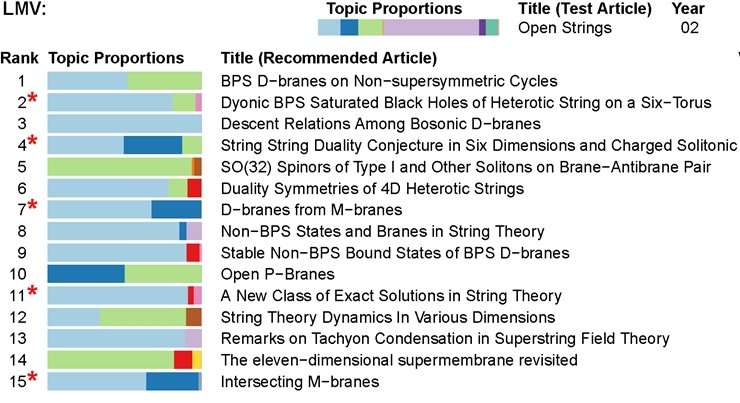Topic-adjusted visibility metric for scientific articles

An NUS statistician has developed a metric that automatically accounts for citation variations in different disciplines for measuring the research merit of scientific articles.
The research merit (impact) of scientific articles is frequently used as one of the parameters to judge the quality of research outcomes. This is usually obtained from the citations of research work already published in the journal. However, different academic disciplines have different research behaviours and citation practices. For example, articles in certain disciplines (e.g. mathematics) generally have low citations while other fields (e.g. molecular biology) in comparison averaged more citations. Hence, a comparison of research quality across different disciplines based on raw citation counts would not reflect accurately the research merit.
Prof Linda TAN from the Department of Statistics and Applied Probability, NUS has developed an article-level metric, called "topic-adjusted visibility metric", which is able to automatically account for the variation in citation activities among different research fields. It computes this without using existing field classifications tagged to the individual article but by using a complex network containing attributes belonging to the selected article. Each article need not belong to a single field but can belong to multiple fields with varying degrees. This can provide a better gauge for comparing individual scientific publications across different fields. The research team has also developed an efficient computational algorithm using this metric to help academic researchers with article recommendations.
Prof Tan said, "When our method is applied to the KDD Cup 2003 (knowledge discovery and data mining competition) benchmarking dataset which has approximately 30,000 high energy physics papers, it demonstrated better performance for article recommendations by being more accurate in predicting the actual citations from test articles, as compared to other available models."
More information: Linda S. L. Tan et al. Topic-adjusted visibility metric for scientific articles, The Annals of Applied Statistics (2016). DOI: 10.1214/15-AOAS887
Journal information: Annals of Applied Statistics
Provided by National University of Singapore

















